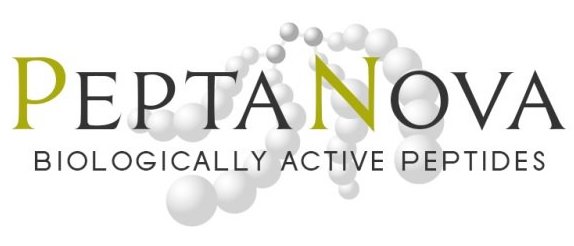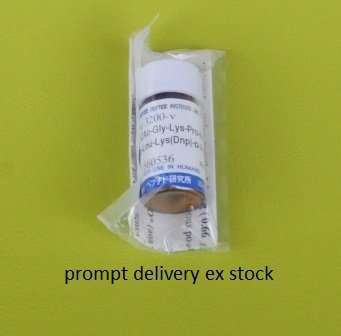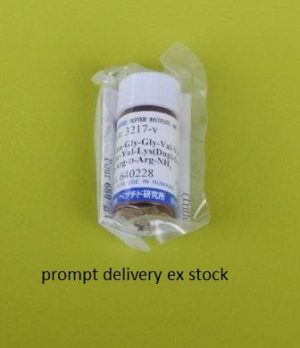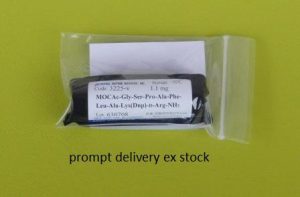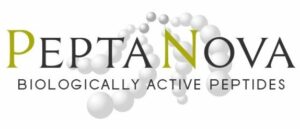MOCAc-Gly-Lys-Pro-Ile-Leu-Phe-Phe-Arg-Leu-Lys(Dnp)-D-Arg-NH2
MOCAc-GKPILFFRL-Dpa-r-amide | Mca-GKPILFFRL-Dpa-r-amide
Mca-Arg-Pro-Lys-Pro-Val-Glu-Nva-Trp-Arg-Lys(Dnp)-NH2 is often used as synonym for MOCAc-Arg-Pro-Lys-Pro-Val-Glu-Nva-Trp-Arg-Lys(Dnp)-NH2
3200-v 1 mg | 175.00 EUR
(7-Methoxycoumarin-4-yl)acetyl- glycyl- L-lysyl- L-prolyl- L-isoleucyl- L-leucyl- L-phenylalanyl- L-phenylalanyl- L-arginyl- L-leucyl- [Nε– (2,4-dinitrophenyl)- L-lysyl]- D-arginine amide
| (M.W. 1756.00) | C85H122N22O19 |
Synthetic Product
A trace of impurity might be detectable by TLC when 100 µg is applied to the plate. The amount of contamination detectable by HPLC is less than 2 %.
Fluorescence-Quenching Substrate for Cathepsin D/E
Intracellular proteases are focused for studying a control system of the cellular function. Many proteases, like cathepsins, calpains, caspases, and enzymes for ubiquitin-proteasome system, are controlling the cellular functions with interaction each other.
Cathepsin E and cathepsin D are two major intracellular aspartic proteinases implicated in the physiological and pathological degradation of intra- and extracellular proteins. Thus far, there are no useful synthetic substrates provide with a simple and fast method for measuring enzyme activities of large numbers of samples.
Recently, Yasuda et al. reported the undecapeptide MOCAc-Gly-Lys-Pro-Ile-Leu-Phe-Phe-Arg-Leu-Lys(Dnp)-D-Arg-NH2 as selective fluorogenic substrate for the rapid and sensitive assay of cathepsin E and cathepsin D [J. Biochem. 125, 1137 (1999)]. This substrate is hydrolyzed equally well by cathepsins E and D ( kcat/Km = 10.9 mM-1.s-1 for cathepsin E and 15.6 mM-1.s-1 for cathepsin D). MOCAc-Gly-Lys-Pro-Ile-Leu-Phe-Phe-Arg-Leu-Lys(Dnp)-D-Arg-NH2 represents a potentially valuable tool for mechanistic studies on cathepsins E and D.
References:
- Y. Yasuda, T. Kageyama, A. Akamine, M. Shibata, E. Kominami, Y. Uchiyama and K. Yamamoto, J. Biochem., 125, 1137 (1999)
